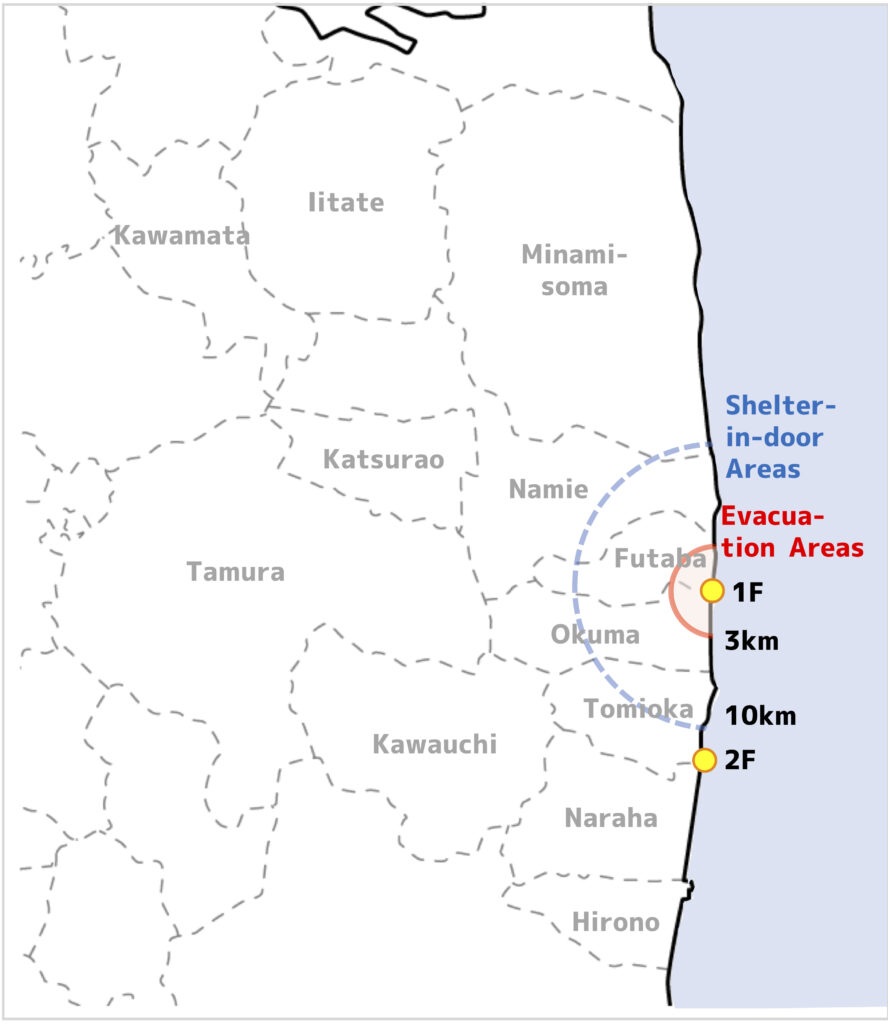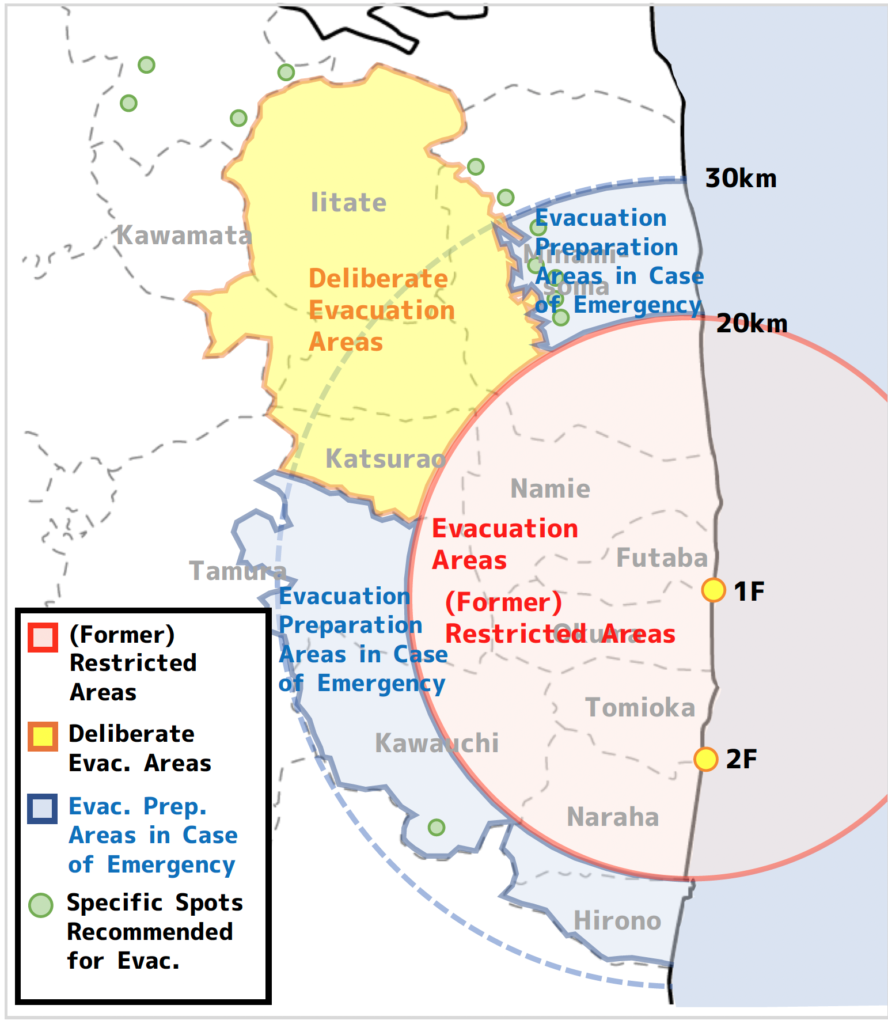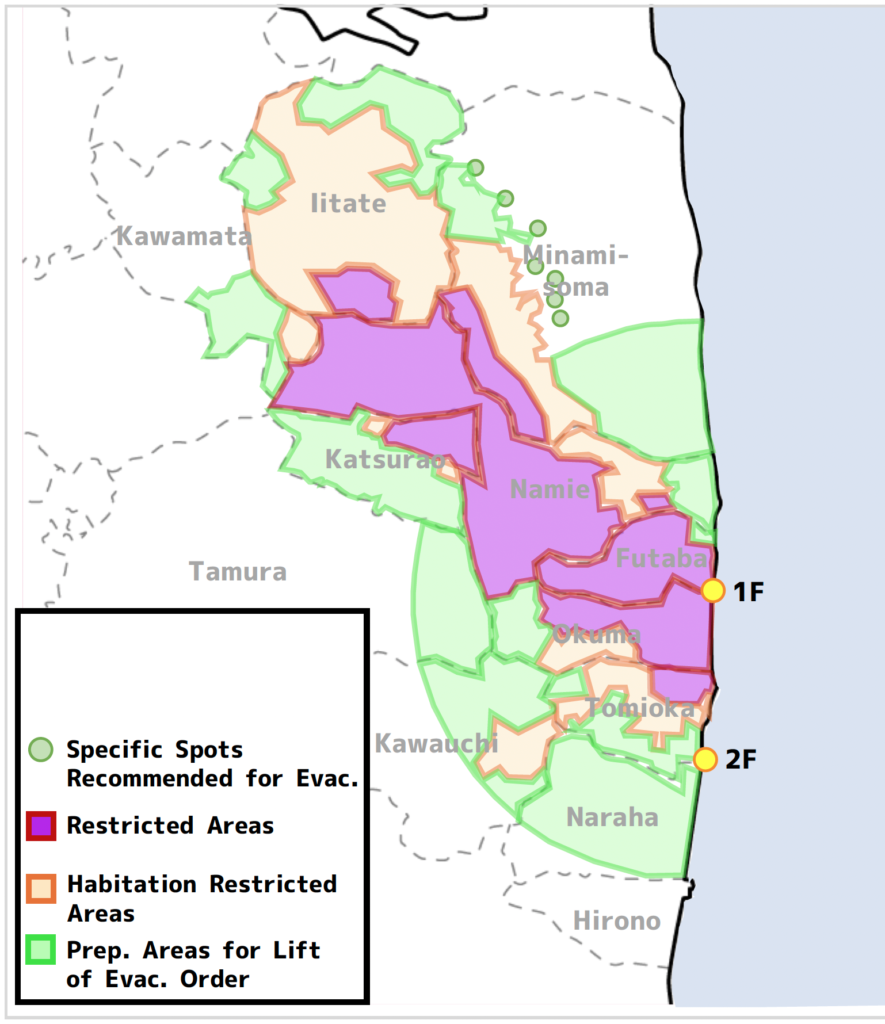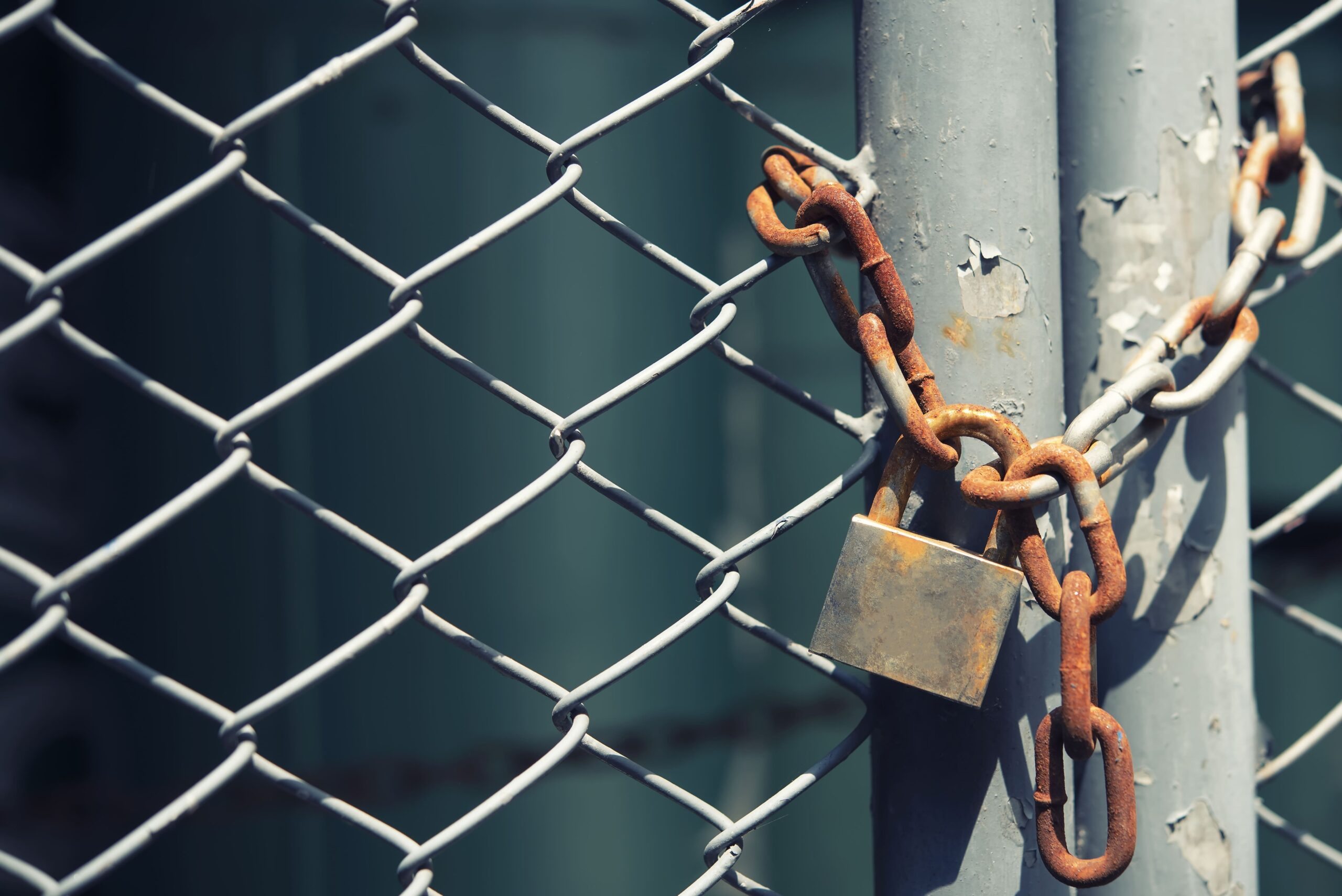Hello, everyone. My name is Daichi, an expert providing the information about the radiation issues in an easy-to-understand manner.
When previously the evacuation orders due to the accident of the Fukushima Daiichi Nuclear Power Station were elaborated, in this article and this article, the Restricted Areas were also briefly covered.
The evacuation orders in the Habitation Restricted Areas and the Preparation Areas for Lift of Evacuation Orders were already lifted by March 2020, and at this point of time evacuation order is still remaining only in the Restricted Areas.
In this and a few following articles, history for its establishment, current measures and future issues to be addressed in the Restricted Areas will be elaborated.
In this first article, as a review, the history of the establishment, changes over time and specific definition of the Restricted Areas will be covered.
In other word, this time, this article will respond to the following questions:
– When were evacuation orders in the Restricted Areas issued, and how had they been changed over time?
– What is the definition of the Restricted Areas?
Table of contents of this article
- (Let’s review its history and overview) Restricted Areas (Vol. 1)
- Changes over time of the Restricted Areas
- Definition of the Restricted Areas
- Summary
I have been involved with the radiation-relevant issues, like the policy on the decontamination activities and the management of the Interim Storage Facility, after the accident of the Fukushima Daiichi Nuclear Power Plant in 2011.
I received a doctorate in the field of radiation, while working in Fukushima.
(Let’s review its history and overview) Restricted Areas (Vol. 1)
As covered in this article and this article, evacuation orders in the Habitation Restricted Areas and the Preparation Areas for Lift of Evacuation Orders had been lifted by March 2020, and evacuation orders still remain only in the Restricted Areas to this date.
In the following parts its history, changes over time and specific definition will be elaborated.
Changes over time of the Restricted Areas

↑ March 11, 2011
The evacuation order in response to the accident of the Fukushima Daiichi Nuclear Power Plant was declared on the date of the disaster, that is, on March 11, 2011, and specifically, initially the evacuation order was declared in the area within 3km radius from the Nuclear Power Plant, and the shelter-in-door order was declared in the areas between 3 and 10km radius from the Nuclear Power Plant.

↑ September 30, 2011
After that, as the situation of contamination caused by radioactive materials released into the environment due to the accident, had become apparent, by emergency response including monitoring, the evacuation areas had been gradually expanded.
As of the end of September 2011, in addition to the former Restricted Areas within the areas 20km radius from the Fukushima Daiichi Nuclear Power Station, the Deliberated Evacuation Areas, where the annual cumulative exposure dose could exceed 20mSv within 1 year after the accident, as well as the Evacuation Preparation Areas in Case of Emergency, based on the Shelter-in-door Areas, were established.
Moreover, in addition to these areas, it had become apparent, that there were points, where the annual cumulative dose within 1 year after the accident could exceed 20mSv, so the points were designated, on a one-by-one basis, as the Specific Spots Recommended for Evacuation, and supports, for example, for evacuation were provided.
This was the period of time, when the evacuation areas were largest, ranging in 12 municipalities, except for the Specific Spots Recommended for Evacuation.

↑ Augst 8, 2013
After that, based on the detailed monitoring regarding the regional air dose rate, as well as coordination with local municipalities, the evacuation areas had been reorganized during the period of around 2 years.
Specifically, the (former) Restricted Areas, the Deliberate Evacuation Areas and the Evacuation Preparation Areas in Case of Emergency had been reorganized into the Restricted Areas, the Habitation Restricted Areas and the Preparation Areas for Lift of Evacuation Orders by March 2018.
In the process of reorganization, the ‘Restricted Areas’ had shown up for the first time, but how was the Restricted Areas specifically defined?
Definition of the Restricted Areas

As explained in this article, but the evacuation areas after their reorganization can be, by focusing on key points, summarized in the following table.
The Restricted Areas were defined as the areas, where annual cumulative dose could not be below 20mSv in five years and exceeds 50mSv at that time.
With regards to the area management, people were forced to thoroughly evacuate from the areas, for example, by constructing barricades, but if they could apply and it is approved, residents are allowed to temporarily enter into the premise of the areas.
Some of you might have seen the barricades in front of roads and houses, or gates with security persons, if you have passed through by cars just close to the Restricted Areas.
| Exposure dose | Management of areas (ex.) | |
|---|---|---|
| Difficult-to-Return Zones | Possibly not less than 20mSv/y in 5 years More than 50mSv/y | - Thorough evacuation (e.g. Construction of barricade) - Temporary entry of residents is admitted, on the premise of implementation of screening, management of personal exposure dose etc. - Policy for decontamination and reconstruction of infrastructure will be considered, based on the results of demonstration projects |
| Habitation Restricted Areas | More than 20mSv/y | - Evacuation in principle - Temporary return (stay overnight is prohibited), through-traffic, entry for public purposes (e.g. Reconstruction of infrastructure, disaster prevention), are admitted |
| Preparation Areas for Lift of Evacuation Orders | Surely 20mSv/y or less | - Evacuation in principle - Temporary return (stay overnight is prohibited), through-traffic, entry for public purposes (e.g. Reconstruction of infrastructure, disaster prevention), are admitted - Resumption of manufacturing, agriculture is flexibly admitted - Screening during temporary entry is not necessary. |
Summary
As the first of the series of articles, this article covered issues of evacuation order and the following reorganization of evacuation areas, in response to the accident of the Fukushima Daiichi Nuclear Power Station, and explained the history: how the Restricted Areas had been established.
The specific definition and approach for its area management were also reviewed.
By the way, above-mentioned contents are summarized in the following videos.
It would be appreciated to visit them at your convenience.
– Japanese version
– English version
You can read the same article in Japanese here.
Thank you very much for reading this article.
See you next time!



コメント